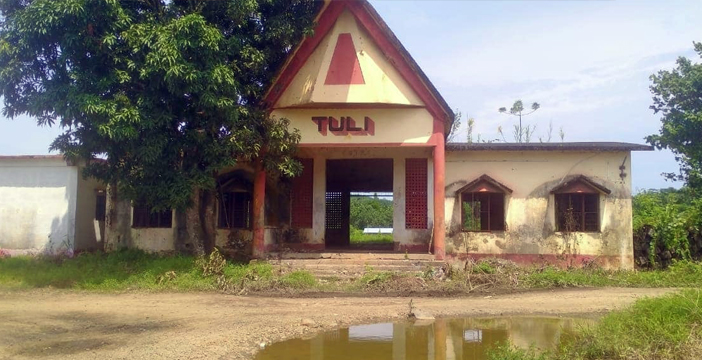Recently, Sakra World Hospital, Bengaluru’s first healthcare facility with 100% Foreign Direct Investment (FDI), has expanded its reach by opening an associate office in Nagaland. The hospital signed a Memorandum of Understanding (MoU) with Dr Imnasenla Longkumer, MD, Dentique, to facilitate this. Sakra Hospital is known for its blend of Indian clinical talent and Japanese quality.
Group Chief Operating Officer Lovekesh Phasu explained that Sakra World Hospital chose to expand into Nagaland because several patients from the state who were treated at their Bengaluru facility had requested that the hospital establish a presence in Nagaland.
Phasu added that they are initially starting with a clinic but plan to soon offer outpatient departments (OPDs) staffed by their own doctors. These doctors will be available to see patients in Dimapur, Kohima, and surrounding areas.
While this is a positive development for the state, it highlights the uneven distribution of healthcare facilities, with most concentrated in Kohima and Dimapur. The rest of the districts, especially in Eastern Nagaland, suffer from inadequate services. This disparity is partly due to private investments being concentrated in more populous and resourceful cities like Dimapur and Kohima, while other districts lack the resources to attract private sector investment.
In December 2023, Union Minister of State for Health and Family Welfare, Dr Bharati Pravin Pawar, highlighted the status of India’s healthcare workforce. As of June 2022, India has 13,08,009 registered allopathic doctors, resulting in a doctor-population ratio of 1:834, considering 80% availability. The country also has 36.14 lakh nursing personnel, with a nurse-population ratio of 1:476.
However, the situation in Nagaland is starkly different. The Nagaland Medical Council had registered only 141 allopathic doctors as of June 2022. With 1,477 Auxiliary Nurse Midwives (ANM) and 1,536 Registered Nurses & Registered Midwives (RN & RM) as of December 2022, Nagaland’s healthcare system is grappling with severe shortages.
Dr Bernard Amer, President of the Nagaland In-Service Doctors Association (NIDA), emphasized the severity of the situation at the association’s annual conference on November 30, 2023. “Nagaland’s doctor-to-population ratio currently stands at a staggering 1:4056, against the World Health Organization’s recommended 1:1000,” Dr Amer stated.
NIDA has urged the government to increase the number of medical seats annually as a long-term solution. As a short-term measure, they advocate for extending the superannuation age of doctors to retain more manpower. “This ongoing issue is a focal point of our effort. We remain optimistic that a resolution will be reached in the near future,” Dr Amer added.
In September 2023, Nagaland inducted its first batch of 100 students into the state’s first medical college, the Nagaland Institute of Medical Sciences and Research (NIMSR). Dr Soumya Chakraborty, NIMSR’s dean-cum-director, emphasized the need for continued support from the central government. “Nagaland has resource constraints due to a lack of industries and other reasons. The Indian government should prioritize providing financial assistance to help our college grow,” Dr Chakraborty told Careers360.
The journey to establish NIMSR has been fraught with challenges. The Nagaland government proposed the idea in 2014, and after central approval, construction began in 2016-17. The project faced numerous delays due to landslides, natural calamities, and the COVID-19 pandemic. “We faced challenges as the land allotted for the medical college was in the sinking zone of Kohima. Underground water started flowing into the building after completion of construction in 2018-19, and the soil caved in. It was further delayed due to the COVID-19 pandemic in 2019-2021,” Dr. Chakraborty explained. Engineers eventually stabilized the site, and construction resumed, nearing completion in 2023.
In April 2023, the National Medical Commission (NMC) officials visited the campus and granted a Letter of Permission (LoP) for 100 MBBS seats, acknowledging the adequate faculty and equipment. The college started functioning on September 1, 2023, with regular classes for the first-year MBBS batch.
Despite these advancements, the dire need for more doctors in Nagaland remains. There is a need for an increase in public funding. There is a need to invest in the construction of new healthcare facilities and upgrade existing ones, as well as to increase funding for healthcare services and medical research across India. It is crucial to foster a culture of research and innovation in healthcare and provide incentives for pharmaceutical and biotech companies to conduct research and develop new treatments.
India’s healthcare spending is 3.6% of GDP, including out-of-pocket and public expenditure. India spends the least among BRICS countries: Brazil spends the most (9.2%), followed by South Africa (8.1%), Russia (5.3%), and China (5%).
For FY 2023-2024, Nagaland has allocated 5.9% of its total expenditure towards health, which is less than the average allocation for health by states (6.3%). For FY 2024-2025, Nagaland has allocated 4.9% of its expenditure on health. This is lower than the average allocation for health by states in 2023-2024 (6.2%).
Additionally, there is a need to increase the number of healthcare workers. This includes increasing the number of medical schools and training programs, as well as offering financial incentives to encourage healthcare professionals to work in underserved areas.
The healthcare system should work in coordination with other sectors, such as education, housing, and sanitation, to address the social determinants of health and reduce overall health inequities.



